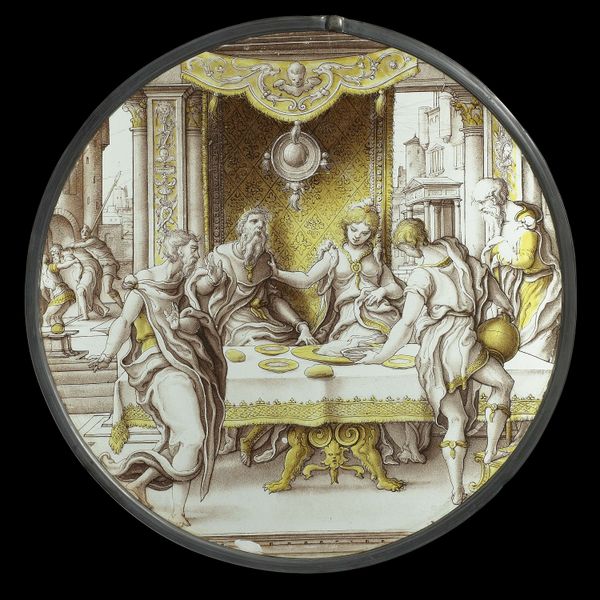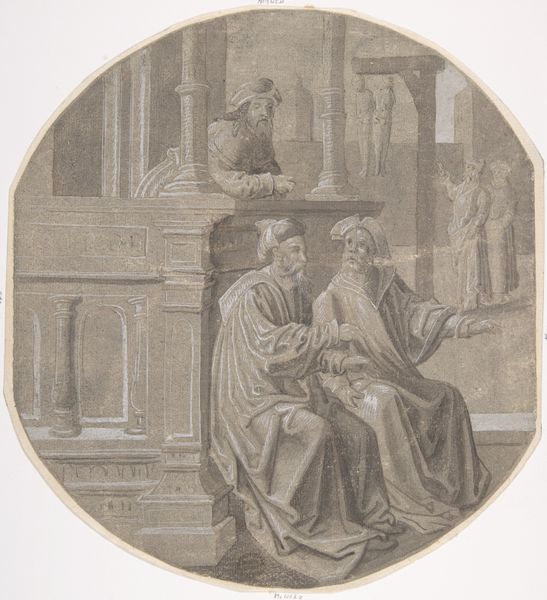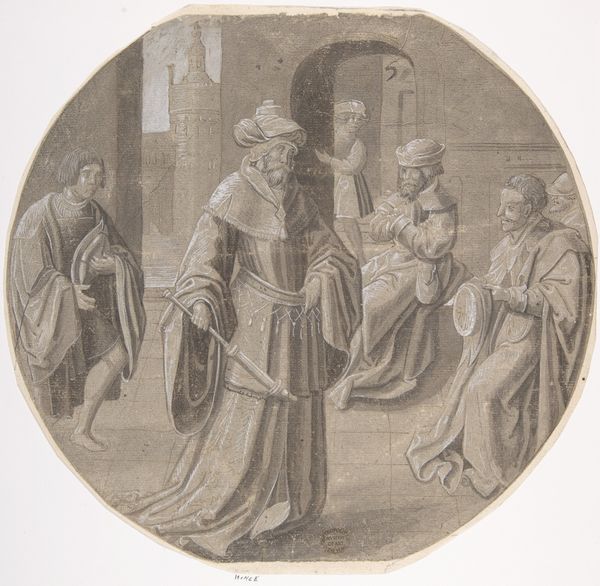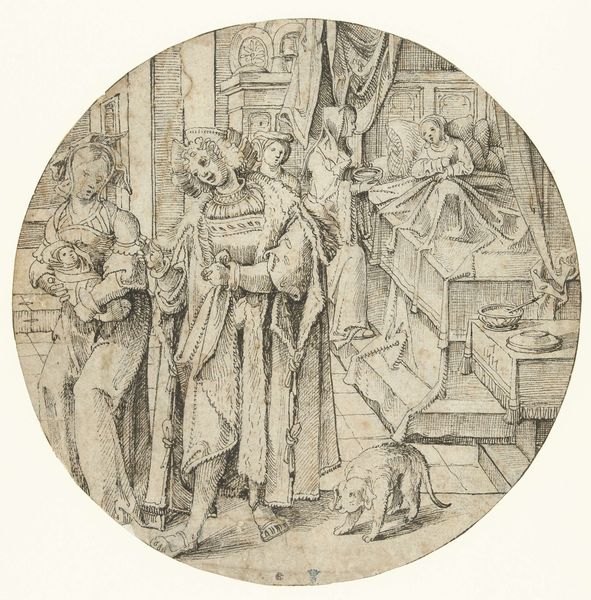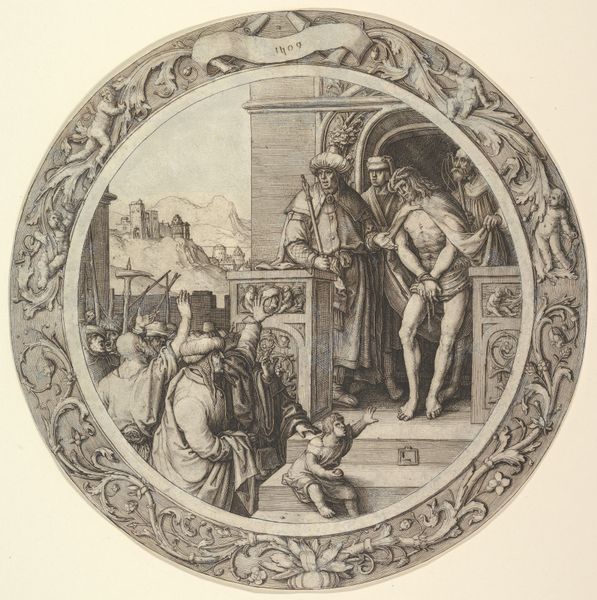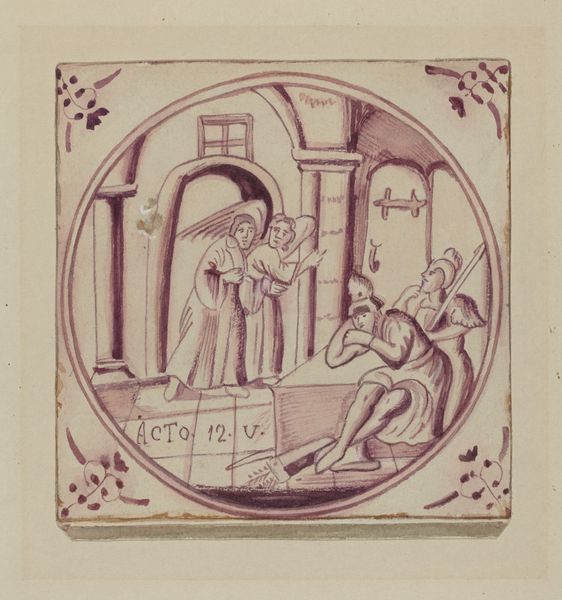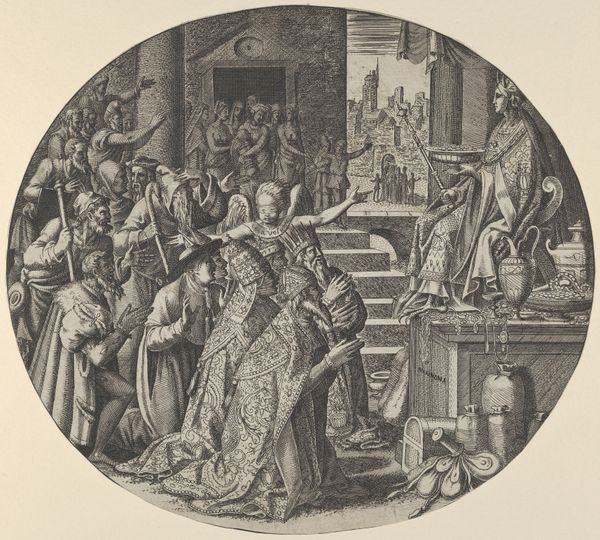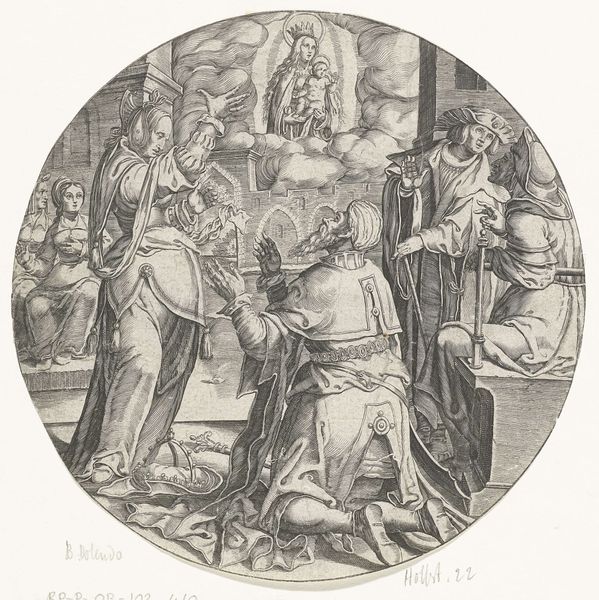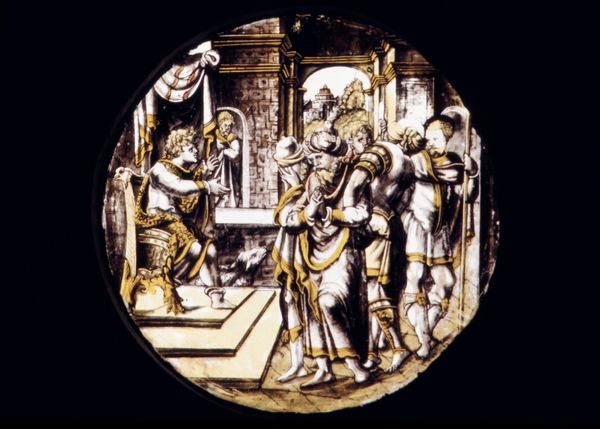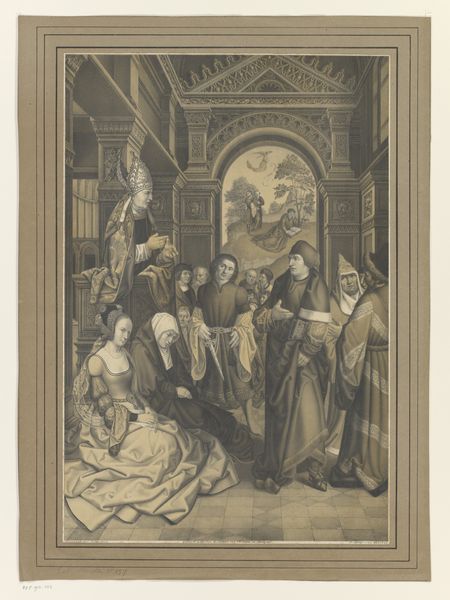
painting, watercolor
#
narrative-art
#
painting
#
caricature
#
figuration
#
watercolor
#
surrealism
#
watercolour illustration
#
history-painting
#
italian-renaissance
#
miniature
Dimensions: height 195 mm, width 192 mm
Copyright: Rijks Museum: Open Domain
Curator: The delicate watercolor before us, created circa 1512 by an anonymous artist, depicts "Jozef verklaart de dromen van Farao," or Joseph Interpreting Pharaoh's Dreams. It resides here at the Rijksmuseum. Editor: There’s a strange stillness to this piece, despite the number of figures. The limited palette and almost miniature details give it an otherworldly feel, like looking into a forgotten storybook. Curator: The choice of watercolour lends itself well to that intimate storybook feel. Its application creates soft lines that still convey the wealth and status of Pharoah. In the context of the Italian Renaissance, art patronage shifted toward courtly subjects, imbuing historical narratives with moral and political significance. It highlights an interest in reclaiming and visually portraying moral tales of power. Editor: And that makes me think about how such visual narratives shaped the social and political consciousness of the time. Consider Joseph's journey from slavery to advisor—a narrative ripe with possibilities for critiquing power dynamics. How might this scene reflect or subvert those existing hierarchies? Curator: Certainly. Art became a medium for social commentary, though often veiled within biblical narratives. The way Pharaoh is positioned, slightly above everyone, in fancier dressings than all, underscores the established hierarchy but Joseph’s forthright gaze, hints at his growing influence challenging such system. Editor: It's in the gaze, isn't it? Consider who is looking where in this tableau; the artist almost invites us to analyze who holds power and whose gaze shapes the narrative. Do we see it in the architecture as well? What about the role of the viewer of this watercolor? Curator: Absolutely. The architecture mirrors that hierarchy. While Joseph is closer to us, the viewer, the grandeur in Pharoah's surroundings subtly places him on a plane above Joseph. The scene itself places the viewer in the role of voyeur, as an observer, in this scene where the fate of many rests. Editor: The detail is mesmerizing, when we consider its function. The miniature execution would imply private contemplation of these biblical motifs. Examining "Joseph Interpreting Pharaoh's Dreams," allows us a glimpse into a worldview shaped by faith, power, and maybe even a little bit of rebellious questioning. Curator: I find that my understanding has been truly enriched. I hadn't really thought of how voyeuristic the setting really seems before you suggested it. Editor: And for me, thinking of the place this water-coloring would hold within private devotion helps connect it with political power in the renaissance.
Comments
No comments
Be the first to comment and join the conversation on the ultimate creative platform.
